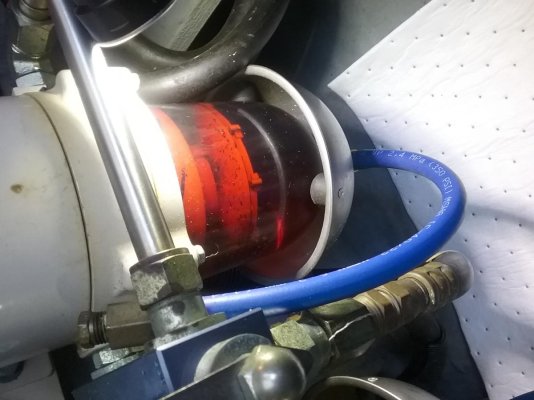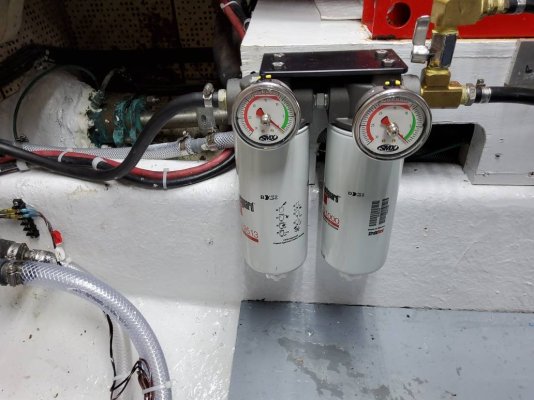Just finished my first filter change on racor 75/900 filters, 2 per engine.
1. As the attached pic shows there was lots of sediment in the bowls and the filters were black although the vacuum guages read zero up to 1500 rpm. Is this normal?
2. Watched you tubes on filling up to brim with fresh diesel to avoid air pockets but port side filters were tilted so when aft side of housing was filled to the brim, there was about a half inch gap on the opposite rim. Do I need to remove that air and if so how? At the secondary? How would that remove air at the top of the racor?
Many thanks for any help.
1. As the attached pic shows there was lots of sediment in the bowls and the filters were black although the vacuum guages read zero up to 1500 rpm. Is this normal?
2. Watched you tubes on filling up to brim with fresh diesel to avoid air pockets but port side filters were tilted so when aft side of housing was filled to the brim, there was about a half inch gap on the opposite rim. Do I need to remove that air and if so how? At the secondary? How would that remove air at the top of the racor?
Many thanks for any help.


